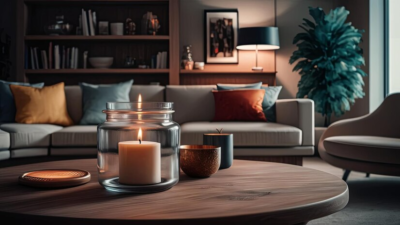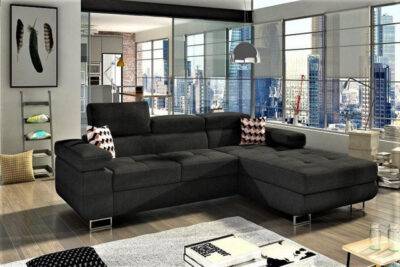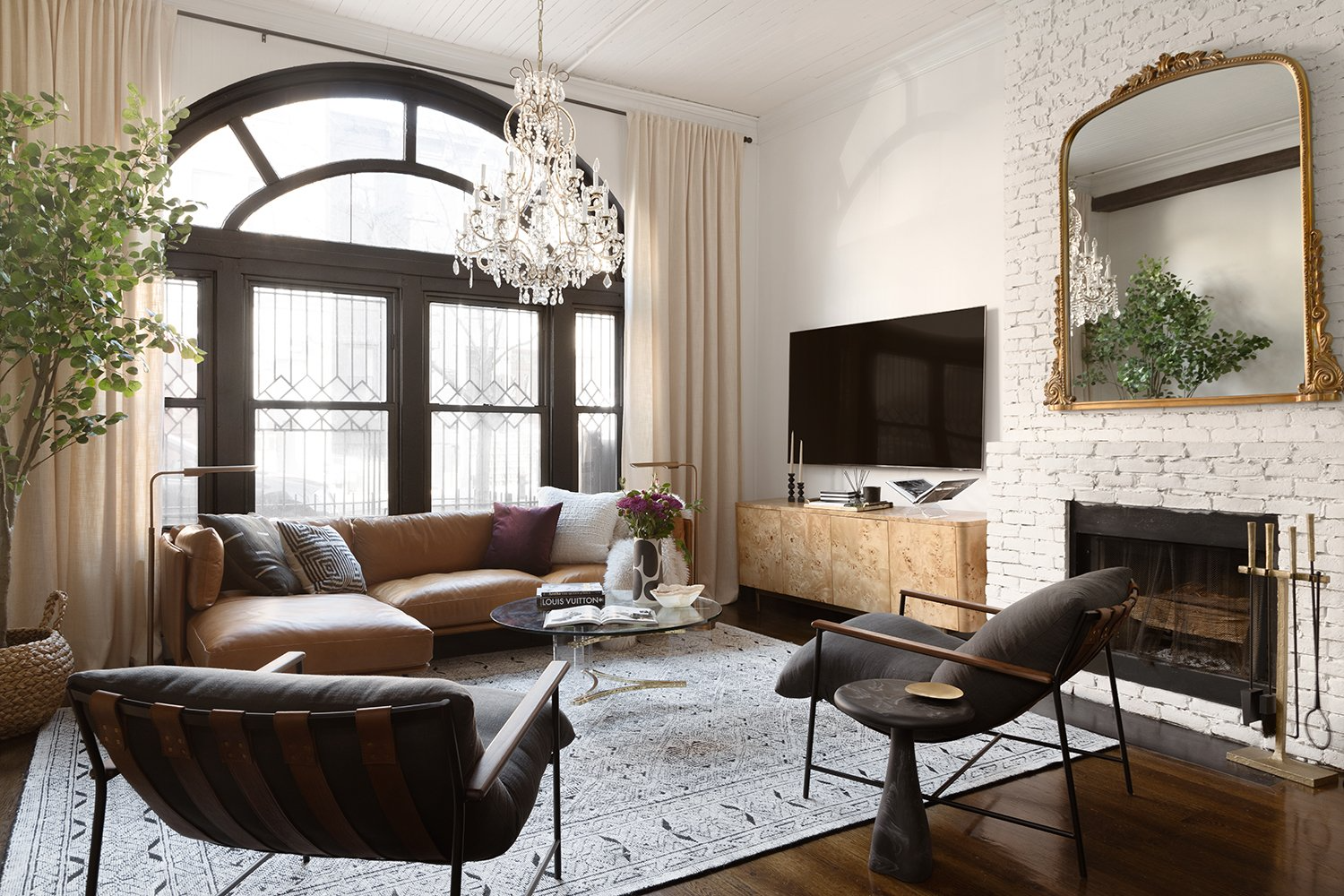The living room holds a valuable region in any domestic, serving because the coronary heart of social gatherings, rest, and leisure. It’s frequently the first area guests see, making it a mirrored image of the property owner’s fashion and flavor. More than just a space for sitting and watching TV, the residing room is a multi-functional vicinity that balances consolation and aesthetics, providing an area to unwind, connect to circle of relatives, or entertain friends.
Given its importance, a well-designed living room combines critical elements including furnishings, lighting fixtures, and décor to create an inviting and practical space. Each issue plays a completely unique function in shaping the atmosphere, making sure the room caters to each practical needs and personal style alternatives. Whether you’re aiming for a comfy, intimate environment or a vivid, modern-day vibe, the right selections in layout can transform the residing room into a true focal point of the house.
2. Living Room Furniture
Choosing the proper furnishings is key to developing a comfortable and practical Living room. From seating arrangements to garage solutions, each piece contributes to the overall fashion and usability of the space. Below are the crucial fixtures factors to don’t forget while designing your residing room.
Sofas and Seating Arrangements
The couch is regularly the center piece of any living room, and selecting the right one is important. There are several forms of sofas to suit distinctive room sizes and patterns:
- Sectional Sofas: Ideal for larger areas or open-plan residing rooms, sectionals offer flexibility and adequate seating. They can be configured in various shapes like L Shape Sofa or U Shape Sofa to in shape the room’s layout.
- Love seats: Perfect for smaller areas or as a complementary piece to a bigger couch, loveseats offer relaxed seating for two people.
- Corner Sofa: These sofas make the maximum of awkward room layouts by becoming snugly into corners, maximizing seating without occupying too much space.
- Additional Seating: Consider including armchairs, ottomans, or benches for added seating. These flexible pieces now not only provide comfort however also can be used to create extra intimate verbal exchange zones.
When selecting seating, it’s essential to stability aesthetics with comfort and capability. The layout need to facilitate easy motion across the room at the same time as selling communication and relaxation.
Coffee Tables and Side Tables

Coffee tables and side tables are both purposeful and ornamental. They serve as a vital surface for putting beverages, books, or ornamental items, whilst also anchoring the seating association.
- Types of Coffee Tables: Available in quite a number materials along with glass, timber, and metallic, espresso tables can either combo in with the room’s décor or make a ambitious assertion. Consider spherical or square tables for smaller rooms, and large, square ones for extra spacious areas.
- Functionality and Storage: Many coffee tables provide extra storage with cabinets or drawers, which can be beneficial for keeping the living room tidy. Side tables also can offer greater storage space and have to be located inside smooth reach of seating regions.
3. Living Room Layout and Design

The layout and design of your living room are important in determining how practical and alluring the gap can be. A properly-deliberate room maximizes area even as creating an ecosystem that feels each snug and aesthetically pleasing. Here’s how to method area planning, focal factors, and normal design to get the maximum from your living room.
Space Planning
Thoughtful space making plans guarantees that your dwelling room is each practical and visually appealing. Consider these factors whilst arranging your fixtures:
Maximizing Space: Begin with the aid of assessing the dimensions and shape of your room. In smaller rooms, prioritize vital furniture like sofas and coffee tables, and avoid overcrowding. For larger areas, smash the room into zones, which include seating areas, studying nooks, or enjoyment spots, to create a more dynamic and useful environment.
Creating Flow: Ensure there’s sufficient room to transport without problems thru the space. Leave pathways between furniture for smooth get admission to to seating regions and exits. Avoid blocking off doorways or windows with cumbersome fixtures, as this may restrict herbal mild and movement.
Conversation Zones: Arrange seating to promote social interplay. Sofas, armchairs, and extra seating have to face each different to facilitate conversations. In large rooms, you may create more than one conversation zones via including more chairs or seating regions.
Focal Points
Every residing room needs a focus that attracts interest and anchors the layout. This key detail can serve as the significant function around which other furniture and décor are organized.
Fireplace: If your living room has a fireplace, it’s a natural focal point. Arrange your seating round it to create a comfy gathering area. You can enhance its presence by means of putting paintings or a mirror above the mantel.
Television: In many modern-day dwelling rooms, the TV acts as the primary focal point. Position the sofa and other seating to permit for snug viewing, but attempt to stability the layout by way of incorporating different decorative factors, together with paintings or shelving, to keep away from making the TV dominate the space.
Artwork or Statement Décor: In rooms without a hearth or outstanding TV, a massive piece of paintings, a formidable reflect, or a gallery wall can serve as the focal point. These capabilities upload persona and may be used to set the tone for the room’s coloration palette and style.
Enhancing the Room’s Appeal
Once the point of interest is installed, you can decorate the general layout of the room through listening to the finer details:
- Symmetry and Balance: Symmetrical arrangements create a feel of harmony and order within the dwelling room. Pairing sofas with equal side tables and lamps, or arranging chairs frivolously around a espresso desk, can create a balanced look. For a extra eclectic experience, strive asymmetrical designs, mixing exceptional styles and sizes of furniture for a dynamic effect.
- Mixing Textures and Materials: A properly-designed dwelling room consists of quite a few textures and materials. Soft fabrics like velvet or linen can be balanced with harder materials like wooden or metal to create visual interest and depth.
- Proportion and Scale: Make positive that furnishings and décor healthy the size of the room. Oversized furniture can crush a small space, whilst tiny portions can feel misplaced in a big room. Proportional furniture ensures that the whole lot feels cohesive.
A considerate layout and well-chosen focal point will increase your living room’s design, making it practical, appealing, and suitable in your lifestyle. Whether your intention is to create a serene space for rest or a energetic area for socializing, the proper format could make all the difference.
Living Room Décor
The décor of your dwelling room is what ties the distance collectively, transforming it from a purposeful area into a personalized, inviting environment. Choosing the proper coloration scheme, textiles, and decorative elements can elevate the general layout and create a harmonious area that displays your fashion.
Color Schemes
The shade palette you select units the tone for your residing room and might significantly have an effect on the room’s mood and appearance.
- Neutral Palettes: Neutral tones, inclusive of whites, grays, and beiges, create a relaxed and timeless backdrop. These shades are flexible and may be effortlessly paired with bolder accents. Neutral schemes work nicely in modern, minimalist, or Scandinavian-inspired dwelling rooms.
- Bold and Vibrant Colors: If you need to make a declaration, colourful shades like deep blues, wealthy veggies, or bold reds can upload energy and character to the distance. These colours may be delivered thru accent walls, fixtures, or add-ons, imparting an thrilling evaluation to extra muted environment.
- Monochromatic Themes: Using diverse sunglasses of a unmarried colour can deliver your residing room an advanced, cohesive appearance. This method works specially nicely with cooler tones like blues or heat shades like earthy terracotta, growing a sense of cohesion throughout the gap.
Textiles and Rugs
Textiles upload warmth, texture, and comfort to your dwelling room while additionally contributing to the general layout.
- Area Rugs: Rugs can anchor your seating association and define distinctive zones in the living room. A large rug below the coffee table and sofa can pull the gap together, at the same time as smaller rugs may be used to create awesome areas inside the room. Choose a rug that enhances your shade scheme and adds a layer of softness and coziness.
- Throw Pillows and Blankets: Adding throw pillows and blankets to your sofas and chairs can introduce pops of coloration, styles, and texture. These gadgets also are clean to switch out seasonally or while you want a clean look with out absolutely overhauling the room’s design.
- Curtains and Drapes: Window treatments are vital for both privacy and fashion. Lighter, sheer curtains can create an airy, spacious experience, at the same time as heavier drapes in rich fabrics could make the room experience cozier and extra intimate. Match or evaluation curtains with different textiles in the room to preserve a cohesive look.
Wall Art and Decorations
Wall artwork and ornamental elements are the completing touches that customize your residing room and add character.
- Artwork: Large portions of art work can act as a focal point, drawing interest and setting the tone for the room’s décor. Whether you pick a ambitious, summary painting or a collection of smaller framed portions, artwork lets in you to specific your persona and style. Consider the size of your wall while selecting paintings to ensure it doesn’t weigh down or wander away inside the area.
- Mirrors: Mirrors are a versatile décor element which could decorate the experience of area and mild in a room. A huge, strategically located mirror can make a small living room sense extra open and ethereal, at the same time as smaller, ornamental mirrors add a touch of elegance.
- Personal Decorations: Don’t neglect to comprise personal touches, consisting of family photographs, tour souvenirs, or meaningful gadgets, to make the space experience uniquely yours. Display these items on cabinets, mantels, or in a curated gallery wall to add warmth and persona to the room.
The right décor factors can make your dwelling room feel cohesive, inviting, and true for your non-public fashion. Whether you lean towards a minimalist, present day layout or opt for a extra eclectic, colorful look, combining shade, textiles, and ornament thoughtfully will ensure your residing room feels like home.
Living Room Style and Themes
Selecting a style or theme for your living room is a crucial step in creating a cohesive, aesthetically pleasing space that reflects your personal taste. Whether you prefer a sleek modern look or a more eclectic vibe, understanding different design styles can help guide your choices in furniture, décor, and layout.
Modern vs. Traditional Styles
- Modern Style: Characterized by clean lines, minimalism, and a focus on functionality, modern living rooms often feature neutral color palettes, simple furnishings, and sleek materials like glass, metal, and wood. Furniture tends to have a streamlined design with minimal ornamentation, while large windows and open spaces enhance the sense of light and airiness.
- Key Elements: Minimal décor, neutral tones, open space, and functional furniture.
- Materials: Glass, steel, chrome, and polished wood.
- Traditional Style: Traditional living rooms emphasize classic design, comfort, and elegance. These spaces often feature rich colors, detailed woodwork, and soft, plush furnishings. Symmetry is an important design principle in traditional rooms, with matching furniture pieces and balanced layouts. This style creates a warm, inviting atmosphere and is often associated with timeless, elegant décor.
- Key Elements: Ornate details, rich colors, classic furniture, and symmetry.
- Materials: Dark wood, leather, brocade, and velvet.
Eclectic, Minimalist, or Industrial
- Eclectic Style: For those who prefer mixing and matching styles, the eclectic approach allows you to combine various design elements from different eras and cultures. Eclectic living rooms celebrate diversity in furniture, colors, patterns, and textures, offering a unique and personalized aesthetic. While it may seem spontaneous, successful eclectic design requires a sense of balance and cohesion to prevent the space from feeling chaotic.
Key Elements: Bold patterns, mixed materials, and a variety of colors.
Materials: A combination of different textures like wood, metal, leather, and fabric.
- Minimalist Style: Minimalism focuses on simplicity and functionality, stripping the living room down to its essentials. This style is defined by clean lines, open spaces, and a limited color palette, usually with an emphasis on white, black, or gray. Minimalist spaces are clutter-free and promote a serene, peaceful environment.
- Key Elements: Simple furniture, minimal décor, and neutral tones.
- Materials: Light wood, metal, and natural fabrics.
- Industrial Style: Inspired by warehouse and loft spaces, industrial design embraces raw materials and unfinished elements. Think exposed brick walls, metal beams, and concrete floors, paired with leather furniture and rugged wood. Industrial living rooms often combine a neutral color palette with bold accents like vintage lighting or oversized artwork.
- Key Elements: Exposed materials, rugged finishes, and a utilitarian feel.
- Materials: Concrete, brick, leather, and steel.
How to Incorporate Different Themes
- Personalize the Space: Regardless of the style or theme, it’s important to incorporate personal elements that reflect your own preferences and lifestyle. This can include unique artwork, heirlooms, or decorative objects that carry personal meaning. Mixing your favorite pieces into a cohesive design creates a room that feels authentic and inviting.
- Blending Styles: It’s possible to combine different styles to create a more customized look. For example, a modern living room can be softened with traditional elements like vintage furniture, or a minimalist space can be made cozier with eclectic décor. The key to blending styles is maintaining balance, ensuring the space doesn’t become too cluttered or disjointed.

